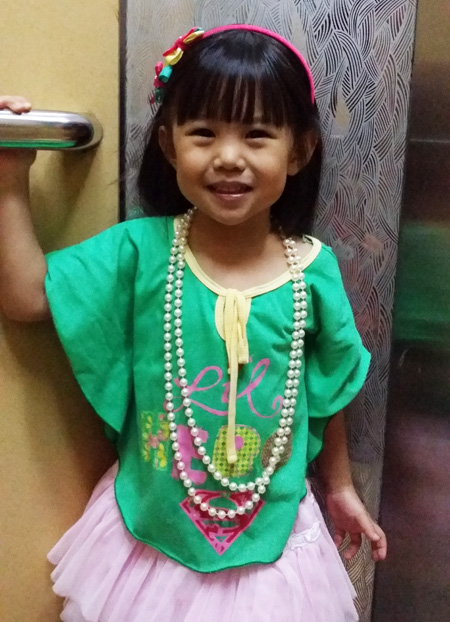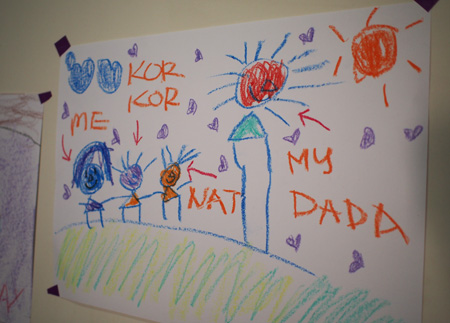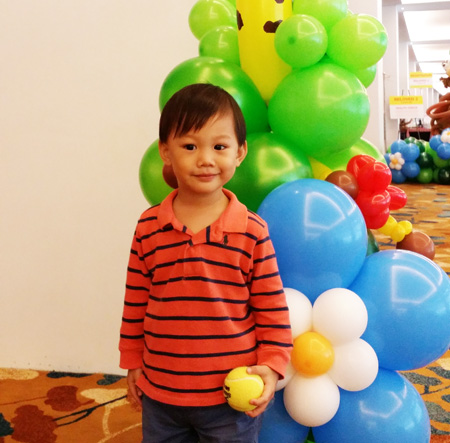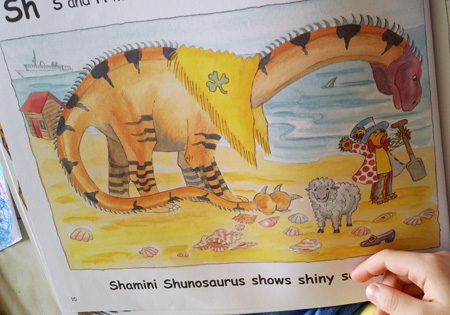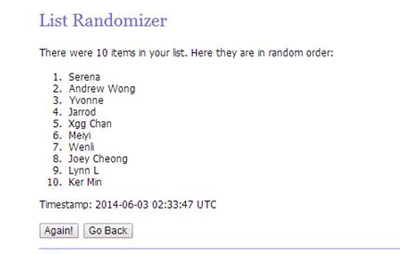In April / May, I was invited to attend a short course for five weeks at Lorna Whiston to learn strategies to teach young children to write.
I declined the invitation at first. For two hours every Monday from 6.45pm to 8.45pm, at the busiest two hours of the peak period at home, I would have to leave my husband and the helper (and then we didn’t have one for a while even!) to handle dinner, tired kids and tuck-in. No mother would want to put anyone except herself through that. Even if it’s once a week. Or for five weeks.
But I eventually accepted the invitation for three reasons. #1: It would be a good break away from the kids at the busiest time of the day (how about you kids learn to handle life without Mama for two hours huh?); #2: I need to acquire more strategies in my arsenal to interest Ben and Becks to start writing (since we’re starting on our reading already); #3: I can’t wait to learn from the experts.

The five-week course addressed a few key questions: How do children learn? What teaching methodology will best support children’s learning? How do we create a supportive writing environment? How do we get children started on writing?
And when they do pick up a pencil and start to write, how do we develop a wider vocabulary with them? How can we get children to plan and structure a story? What can we do to teach them how to start and end a story effectively? What are the stages of writing development?
Being a home-teaching mom who is actively involved in my children’s learning, especially for the English Language, I do already have some ideas and strategies up my sleeves. Attending this course gave me more ideas, more strategies to tweak and adapt for my own children and helped clarify some doubts I have regarding how children learn.
This writing course was also helpful in that the trainer, the Head of Teacher Development Unit at Lorna Whiston, meticulously planned and customised his sharing to our children’s developmental and learning needs. There were four of us mothers in the course, and we all had children of different ages ranging from two years old to nine. And as we interacted, we discovered our children had different needs and challenges, and as we shared them with the class, Jonathan also provided his expert opinion and shared resources and strategies to help with those challenges.

Lesson in progress by Jonathan Cooper, Head of Teacher Development Unit

In class, we learned how to evaluate writing based on a ‘Success Criteria’
It was a suitably tailored course with plenty of interaction.
A good deal of learning and relearning took place during those five weeks for me, and it helped me to evaluate some of the things I’ve been doing with the older kids. The course also reminded me about returning back to the fundamentals of role modelling and reading.
Here are five things I took away from the course, which are particularly needful at this stage of my children’s learning development at 5 and 4 years old:
1. Create a print-rich environment at home
One of the key things to create a supportive writing environment at home is to start by creating a print-rich environment. There should be an easily accessible library, lots of pen and paper lying around, attractive displays of their writings, labels that accompany visuals, word maps and charts, and lots of big books for sharing and enjoyment. Creating this is the first step to get children to associate fun with words and words with fun because the home is now literacy-rich and words are everywhere.
For me, it’s a reminder that I need to constantly create and recreate this at home – even though it means that the house looks like a classroom now. Time to change some of those posters and put up new displays on walls.
2. Don’t stop reading to your child and with your child
Reading to and with our children helps them build their vocabulary. And as long as the child wants to read to, regardless of how old he or she is, we should read to them. When they don’t want us to read to them any more, there should be time set aside to read together.
3. Bring back the play-dough and monkey bars
I hate play dough. I hate the mess it creates and the cleaning I have to do after. But I have to bring it back. Kneading dough actually helps strengthens those little fingers and prepare them for writing. During outdoor play, get children to swing on monkey bars to strengthen their grip and develop those muscles.
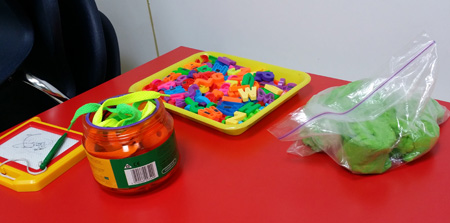
Time to bring the dough back for play!
Ok, time to encourage my monkeys to swing and to make some DIY play dough for the kids.
4. Scribe by highlighting to create storybooks authored by your child
This is one tip I learned which I found especially useful. If our kids can’t write or spell yet, we can still get them to imagine up stories and put them all on paper – with us as their scribes!
I tried this on Ben recently and it was a hit with him. I put some paper with triple lines together and asked him to author a story book. What does he want to write about? Who’s going to be in the story? What’s going to happen? Then as he told me his story, I took a highlighter and wrote out the sentences for him, after which he took over by tracing what I wrote with the highlighter.

Writing his story

A Fun Party by Ben Kao
Doing this also allowed him to practise penmanship and learn the basic structure of a story – that every story has a beginning where characters are introduced, a middle where something happens, and an ending. And best of all, he loves writing now, and wants to create more storybooks.
5. Always model. Children need good models.
Children need to see adults write, whether it’s a shopping list, a note for someone or a birthday greeting. When they see that, they wouldn’t be averse to writing so much. Yes, so it’s time to put down the iPad and phone – because typing a text message is not writing – and start picking up pen and paper in front of the kids to scribble something.

Samples of guided writing by different ages shared with us at the course
Also, every element of story writing requires specific teaching and modelling. So it’s important to share good stories with children, and possibly even use bad examples to show them what not to do.
Recent reading research tells us that preschool teachers and parents should be systematic and explicit in their support of literacy skills, which means that things should not be left by chance and teaching should also be organised according to developmental milestones. So if it’s time to teach how to start a story, make it explicit and expose the child to as many story starts as possible. Plough through a story to learn vivid verbs if the child is at the stage where he needs more vocabulary to create the element of excitement in his story. Bottomline is: as parents, we need to model, we need to teach. Don’t leave things to chance.
All in all, fruitful learning took place for me for five weeks and I am going to gradually introduce some of the writing strategies to the kids as we chug along in our homelearning journey. If you’d like more information about the adult courses Lorna Whiston runs, you can connect with them on their FB page, visit their website or contact them at 6251 7662.

This was the course I was invited to attend
Disclosure: I was invited to attend the Improving Children’s Writing course conducted by Lorna Whiston Study Centres for 5 weeks. No monetary compensation was received and all opinions here are my own.





